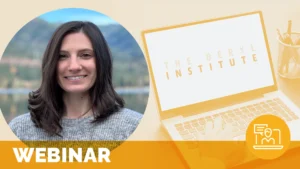What Will it Take to Build a Culture of Service Among the Medical Staff?

On the Road with Seattle Children’s Hospital – January 2015
by Deanna Frings
This month’s on the road highlights the work of the physicians at Children’s University Medical Group (CUMG), the 500-plus member practice plan for the faculty of the University of Washington’s School of Medicine who practice at Seattle Children’s Hospital in Seattle, Washington.
In 2009, Robert Sawin, MD, surgeon-in-chief and president of CUMG posed a question and issued a challenge to his colleagues, “What would it take to promote and foster a culture of service among the medical staff?” Several physician leaders were excited to find out and embarked on a journey to:
- Learn about best practices
- Engage the hearts and minds of colleagues
- Develop a program to support each other and their colleagues in providing the best experiences for patients and their families
- Improve physician job satisfaction
Physician engagement is a topic of high interest at The Beryl Institute’s many events and community discussions. Patient experience professionals seek approaches and strategies to effectively partner with physicians to improve the patient experience. It quickly became apparent to me during this visit that I was seeing a blueprint to achieve just that.
The physicians I met at Seattle Children’s are passionately committed to the patient experience movement. In response to a 2013 faculty survey, CUMG physicians ranked relationships with patients and patient families as the factor most important to their own job satisfaction, ahead of practicing their craft, recognition and compensation. It was immediately clear that they had the burning platform and the need to truly partner with physicians to assure buy-in and success. After all, patient experience is about how we choose to relate to each other as human beings. As CUMG physicians have discovered, these connections, illustrated below, between “physician and patient/family”, “physician and hospital” and “patient/family and hospital” are critical, so critical that they have aptly named their program CONNECT.
Patient Experience School
The CONNECT journey began in 2009, when Harris Baden, MD, Section Chief, Cardiac Critical Care took up Dr. Sawin’s call to create a physician culture that fostered patient and family satisfaction. Dr. Baden, one of my guides for the day, joked that if a Master’s degree in patient experience existed he would have earned it based on all of the research he conducted over a four year period. His “curriculum” included local and national site visits with medical systems leading in patient experience improvement work, extensive reading, interviewing CUMG colleagues to assess the current state, participation in webinars and attendance at conferences.
After immersion in the concepts, Dr. Baden was ready. His vision was to foster an environment that achieves both a level of physician satisfaction so that doctors would not want to practice anywhere else and to provide care in such a way that patients and families wouldn’t choose to go anywhere else for their care. With that vision in mind, he grabbed pencil and paper and sketched out the program he wanted to bring to CUMG physicians. He knew that for a movement to grow he needed to engage other physician champions and that the program needed infrastructure and support to become real. In 2013, Seattle Children’s provided resources for Dr. Baden to hire Program Manager, Jennifer Scott, MHA, PMP, to help him develop the program. Soon after, a leadership group was formed.
Doctors Baden and Sawin (CONNECT sponsor) have been steadfast in their belief and strategy that this work be physician-led. Given the personal nature of the improvement work, they believed that physicians would be more receptive to a program developed from within their own ranks. Additionally, interviews with CUMG physicians revealed a strong interest in leading improvement work and developing this program presented a perfect fit with that desire.
Engaging Physician Hearts and Minds
My day began with meeting the Executive Leadership Group for the CONNECT Program, a group of six doctors in addition to Dr. Baden (Jeff Avansino, MD, Brianna Enriquez, MD, Russell Migita, MD, Nanci Rascoff, MD, Jack Salerno, MD, and Kelly Schloredt, PhD) who volunteered to join the team after exposure to program concepts. Jennifer Scott, the Program Manager is also a group member as is Christine Kessler, Executive Director, CUMG and a program sponsor.
The group meets twice a month and provides consultation and oversight regarding program direction and development. These physicians talked about the program in their own words, manner and style. No acronyms were espoused or scripts repeated but rather a deep discussion of what CONNECT has brought to them and why they believe it has made them better physicians.
Dr. Brianna K. Enriquez, Emergency Department, stated that “People notice when a provider comes back with a basket of apples given to her by a family or the many pictures and drawings on the wall and they ask themselves, ‘how did they achieve that?’ We all want that kind of bond [with the families we care for].”
“This grass roots effort is about continuously learning from each other,” shared Russell Migita, MD, Clinical Director, Emergency Services. “This is an organic process and we are still learning.” As all of us know, participation of the medical staff is critical but how do you appeal to the extremely busy clinicians juggling numerous competing priorities? The team determined the critical first step was to inspire by capturing physicians’ hearts and minds. Dr. Baden and the other members of the team have presented at many of the clinical division meetings over the past 12 months. These meetings are structured around viewing an inspirational video followed by discussion of four simple questions.
Why are patients and their families here?
How do they feel?
What do they want?
What do we want to give them?
Dr. Baden believes it is important that the message is delivered peer-to-peer in order to build personal relationships and create a community of support. The team has found that starting with the “Why” and making a human connection has been a very powerful method of engaging physicians. How is it working so far? The response has been overwhelming, with the list of individual physicians and entire divisions growing with every presentation.
As our morning meeting ended, I was excited to know I would be with this group again at the end of my visit. I was inspired and appreciative of their unwavering commitment to what they have started and anxious to spend more time with them.
To learn more about CONNECT, the structure, work plan, improvement model and lessons learned, view the article Physician-led patient experience improvement efforts: The CONNECT program, an emerging innovation recently published in the Patient Experience Journal.
Developing a Program
There are three core elements to the newly developed CONNECT Program.
- Sharing physician-level patient experience data with physicians
- Peer coaching
- Communication workshops
Jack Salerno, MD, Director, Electrophysiology and Pacing Services stated that he values the CONNECT Program’s commitment to a scientific approach towards improvement. In order to do this, physicians need a means to measure their progress. Dr. Salerno explained that Seattle Children’s administration had recently approved expansion of their patient experience surveying methodology so that ambulatory providers will soon receive provider-level data.
Peer-to-peer coaching is a key tactic used to support learning new ways to improve the patient and family experience. Trained physician coaches observe their peers in practice and provide feedback. All physician members of the Executive Leadership Group have been trained as coaches. “This has been an amazing experience”, shared Jeff Avansino, MD, Attending Surgeon Division of General and Thoracic Surgery, Medical Director of the Surgical Unit and Associate Professor of Surgery. “I have learned more watching than being observed.” Following the observations, coaches not only provide feedback on areas for potential improvement but also capture the many things their peers are already doing well. Dr. Avansino confirmed that the coaching approach deployed has been very supportive, non-threatening and a grass roots effort, all key ingredients in achieving a high level of physician engagement.
The CONNECT Program piloted its first workshop with the Heart Center in November 2014 using the CONNECT Model. In simplest terms, the CONNECT model is designed to encourage behaviors that demonstrate genuine caring for patients and families, built on a foundation of being truly present and showing real empathy. The CONNECT model is organized by the phases of a visit:
CONNECT to the Moment (before the visit)
CONNECT with Patient and Family (upon entering the room)
CONNECT to their Concerns (during the clinical interview)
CONNECT the Dots (during and when closing the visit)
In the workshops, the model is demonstrated by program faculty and then the participants break into small groups and practice using the model through role playing scenarios. The first workshop was well received and at least nine more are planned for 2015. As an added “carrot” for participation, physicians can now receive Maintenance of Certification (MOC) credit for participation in the CONNECT Program.
Dr. Salerno emphasized the value of taking an individualized approach that matches the needs, style and skill set of each physician. For example, he has studied other communication frameworks in addition to CONNECT. “I have taken bits and pieces from all of them,” he said. When asked what has been the most significant change in his practice, Dr. Salerno said, “I sometimes feel we are afraid to ask our patients and families what concerns them most out of fear of what we might get involved in opening ‘Pandora’s box’. I have learned it’s important to open the box.” Dr. Salerno shared a few examples of the powerful impact when he has asked and then really listened to best understand the needs of the patient, parents and other family members. “I have learned that instead of going in punching, I let the families talk.” He takes this opportunity to explore their biggest concern and worry. As I listened to the positive impact CONNECT has brought to his practice, what struck me most was his observation that at the end of the day he leaves feeling more positive and energized about being a physician. “I’m having more fun in the clinic getting to know patients as people and knowing what they want, because I ask.”
My next stop was to meet an incredible couple, Elisabeth H. Villavicencio, MD, Ph.D. and Carlos E. Villavicencio, MD, MS/MI, parents of a child with a chronic medical condition, as well as doctors on the faculty at Seattle Children’s Hospital. The experience of loving and caring for their child has had a profound impact on their own practices as physicians. They recognize they have an invaluable perspective to share with their colleagues and the residents they teach. They clearly know the importance of asking the families what is most important to them, to explore their needs, concerns and fears. “The doctor’s recommendations must fit into the context of the family’s life,” said Dr. Beth Villavicencio. They are grateful to be, and take great pride in, working for a hospital and physician group invested in and committed to this journey.
Purposeful and Intentional Design
Both the Emergency Department and the Psychiatry and Behavioral Medicine unit have recently completed renovations designed to support relationship-centered care. Applying the formal training many of the physicians and staff have received in continuous performance improvement (i.e. Lean) including traveling to Japan to tour factories that have successfully integrated Lean management and production systems, the team set out to create a space making it easy for everyone to do their jobs while providing high quality and compassionate care.
Dr. Migita gave me a tour of the Emergency Department which was redesigned and opened in April 2013. He provided an impressive list of objectives realized including: a floor plan that is efficient, effective and accessible, an environment that is safe, comfortable and private and a care team that is highly visible. Seventy percent of patients are directly roomed and seen by a care team member upon arrival. Staff-to-staff communication has also been improved in the new unit. This, in part, is a direct result of clustering the staff in care teams, creating greater proximity to their patients. Also interesting in the physical layout of the department is the lack of walls which aides in enhanced visibility for staff and patients, an important design element they fought hard for despite initial objections from the Fire Marshall.
To ensure the highest level of success, a life size model of the department was built out of cardboard in a warehouse to test the design before it was built. Dr. Migita emphasized that the changes in the ED would not have been possible without the support of hospital administration – a common sentiment shared over the course of my visit. In addition, executive leaders approved a new scheduling plan for the ED providers. The new plan has achieved greater patient safety and ensured provider well-being. They have implemented a “waterfall” staffing pattern, creating a 4-hour overlap between shifts. This takes into account the fact that a provider is cognitively fresh at the start of their shift so rather than spending valuable time getting a report from the physician already on duty, they begin to immediately see new patients. This also prevents time and information gaps that can sometimes occur during the handoff process. These changes in the ED have clearly resulted in better and timelier care for the patient and greater job satisfaction by the staff.
The ED’s “True North” is achieving excellence in patient/family experience. All of these efforts support the same goal of having a shared purpose, working as a team and feeling good about the job they are doing. Dr. Migita also reflected on how this work has helped the group look deeper at their own relationships with the nursing and clinical staff. “It is equally important they appreciate the value they bring and know how much we appreciate the work they do. We must be deliberate in our interactions with the staff as much as the patients and families – they are heroes.” One way the ED leadership is being intentional is rounding with staff and asking them to share one thing they are proud of that day. “It’s the little things they do. It’s really been fun.” said Dr. Migita.
Kelly A. Schloredt, PhD, Clinical Director, Inpatient Psychiatry and Behavioral Medicine Unit, gave me a tour of the newly opened inpatient unit that was designed using the same performance improvement principles applied in the ED, a project five years in the making. The first thing Dr. Schloredt pointed out, among the many innovative changes, was the lack of locked doors commonly found on a psychiatric unit. This has gone a long way in creating an openness and sense of freedom on the unit. She admits this was a topic of many long discussions. At the time of my visit, the unit had been open for 10 days and so far the open door concept is getting rave reviews from the staff, patients and families. A clinical benefit of this design and discovery is that as they relaxed the freedom in the space, some patient issues that were problems previously do not seem to be problems today.
I was very impressed by this team’s ability to design a unit that mimics the many aspects of a warm and homey environment including separate community, living and bedroom spaces. I was also very aware of the natural lighting illuminating the hallways due to the large windows as well as blinds that can be opened during the day. Dr. Schloredt summed up the tour by sharing, “I’m most excited about our goal to create dignity and hope and so far we have been successful.”
The end of my day started much as it began. I was honored to share lunch with the physician sponsors, the Executive Leadership Group and several division heads who were part of the initial CONNECT pilot. Many of the themes I had heard throughout the day were reinforced. This group feels greater job satisfaction and recognizes that asking patients and families what is most important to them is not in competition with the goals of the provider. There was also clear excitement that these skills can and are being taught.
Most fun for me was that within 5 to 10 minutes I began to feel like a fly on the wall eavesdropping on a robust and dynamic conversation amongst the group. I imagine this is what their bimonthly meetings are like as they engage in sharing the many things they are doing to put CONNECT into practice. They shared specific examples, told stories and even attempted to take a group selfie. Toward the end of our conversation I could see some new ideas emerging as one physician said, “Oh, I’m going to have to try that!”
In conclusion
As a community of practice, we at The Beryl Institute are excited about the growing community we are privileged to support including a growing physician presence. This On the Road highlights and reinforces physicians’ passion and commitment to the patient experience and provides a great example of physician engagement. I thank all of the individuals who shared their stories during my visit at Seattle Children’s Hospital with special appreciation to Jennifer Scott, Dr. Harris Baden and the members of the Executive Leadership Group.
Related content
-
 Culture & Leadership | Staff & Provider Engagement
Culture & Leadership | Staff & Provider EngagementNonviolent Communication to Improve the Human Experience
Discover the transformative power of Nonviolent Communication (NVC) in this engaging webinar. Grounded in emotional intelligence, NVC equips healthcare professionals with tools to resolve disputes and prevent conflict escalation through clear, compassionate communication. Participants will explore NVC’s four-step framework, which focuses on identifying feelings, understanding needs, and connecting with values that shape actions and motivations.
Learn more -
 Staff & Provider Engagement
Staff & Provider EngagementPhysician Engagement in Patient Experience
By: Triwanna Fisher-Wikoff, MD, FAAFP Last year, I attended a conference on patient experience. I found myself in a room filled with thought leaders from around the country, all dedicated to enhancing the human experience in healthcare. It was a bit daunting, being one of only two physicians in the room, but I was there
Learn more -
 Staff & Provider Engagement
Staff & Provider EngagementStaff and Provider Engagement: The Impact of Connecting with Patients and Families
By Corey Kimpson This is the fifth blog in a series of eight by The Beryl Institute’s Global Patient & Family Advisory Board (GPFAB). The intent of this series is to present our perspective on patients’ and families’ lived experience through each of the strategic lenses of The Beryl Institute’s Experience Framework. The Experience Framework
Learn more
